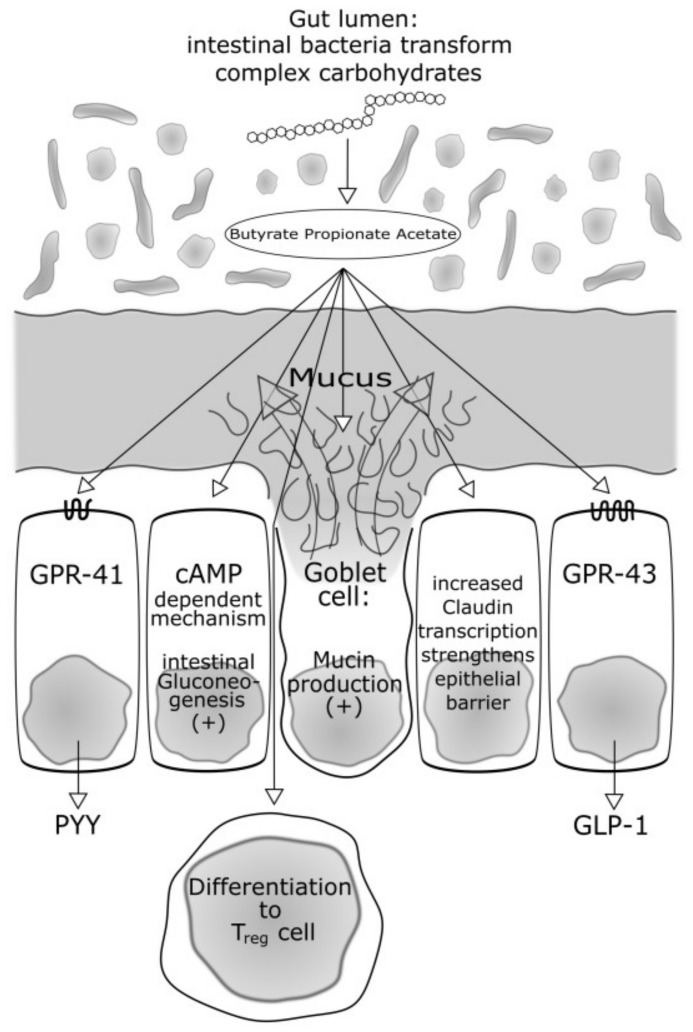Figure 1.
Some of the yet studied effects of short-chain fatty acids (SCFAs): (1) Peptide YY is expressed after SCFA-dependent activation via the G-Protein coupled 41 receptor (GPR-41); (2) Glucagon-like Peptide 1 (GPR-1) is expressed after SCFA-dependent activation via the G-Protein coupled 43 receptor (GPR-43). Glucagon-like Peptide 1 (GLP-1) and PYY inhibit gut motility, reduce appetite and reduce energy harvest; (3) Propionate and Butyrate activate the intestinal gluconeogenesis (IGN) via complementary mechanisms. Butyrate activates an IGN gene expression through a cAMP-dependent mechanism. Propionate, itself a substrate of IGN, activates IGN gene expression via a gut-brain neural circuit involving the fatty acid receptor FFAR3; (4) SCFA promote the formation of peripheral regulatory T cells from naive CD 4+ Cells. It is speculated that SCFAs, especially Butyrate, are inhibitors of some histone deacetylases. An acetylation of Histone 3 promotes the expression of the T regulatory (reg) specific transcription factor Fox P3; (5) Intestinal mucin synthesis. In cultures of human goblet cell-like LS174T cells, Butyrate, as well as propionate, induce an increase in MUC2 mRNA levels; (6) Protective effects of butyrate for the endothelial barrier. Butyrate decreases the molecular permeability of the intestinal barrier. Butyrate acts through increasing Claudin-1 transcription by facilitating the association between SP1 (transcription factor) and the Claudin-1 promoter.

